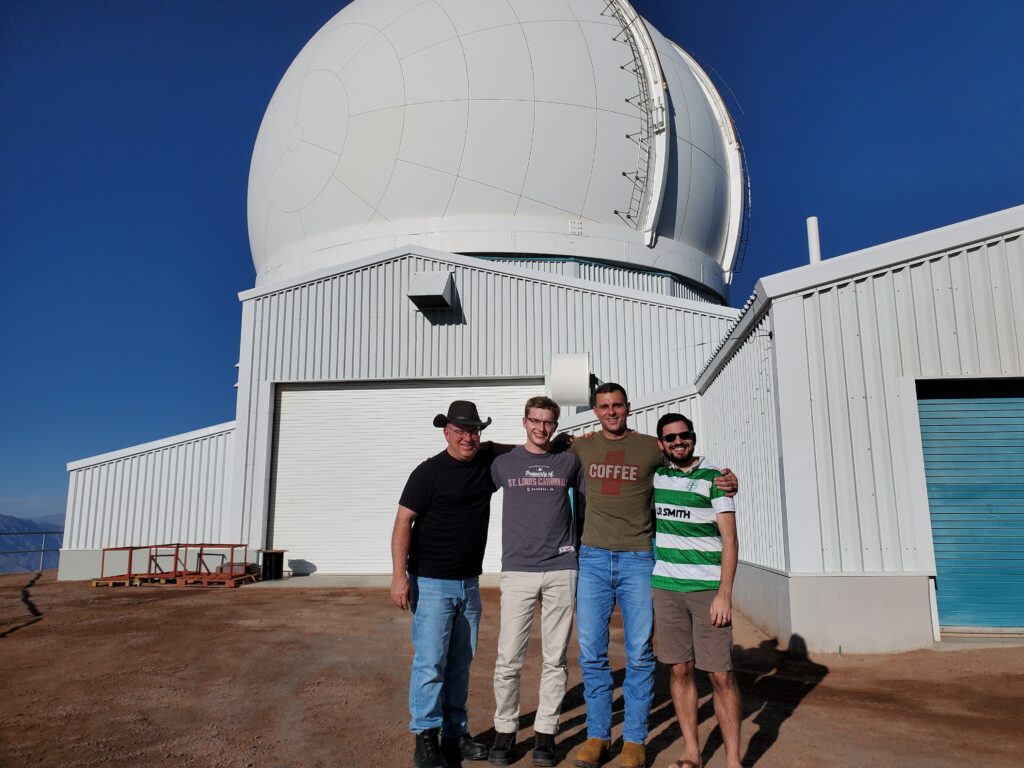 I am a member of the Clemens research group at UNC – Chapel Hill. My group studies white dwarf stars in many different contexts – from pulsations and variability, to binary interactions, to potential remnant planetary systems.
I am a member of the Clemens research group at UNC – Chapel Hill. My group studies white dwarf stars in many different contexts – from pulsations and variability, to binary interactions, to potential remnant planetary systems.
My PhD work focused on the question of type-Ia supernova progenitors by investigating the menagerie of “failed” supernovae — double-white-dwarf merger systems which lacked the conditions necessary to instigate a thermonuclear detonation, and instead produced a remnant star with strange characteristics. Such objects include white dwarfs with abnormally high mass, rapid rotation, strong magnetism, heavy element composition not associated with planetary debris, or extreme trajectories within the galaxy. I hope to characterize the population of white dwarf merger remnants which did not result in a supernova, and to contextualize these objects within the broader white dwarf population. In particular, the questions I would like to answer are:
- What physical characteristics and behavior suggest a white dwarf is a merger remnant?
- What progenitor systems produce a remnant rather than a SN Ia detonation?
- What fraction of the white dwarf population is comprised of merger remnants?
- How does the rate of “failed” SNe Ia compare to WD merger rates and observed SN Ia rates?
My work also includes a significant focus on astronomical instrumentation. My research group built and maintains the Goodman Spectrograph on the Southern Astrophysical Research (SOAR; pictured) 4.1m telescope on Cerro Pachón, Chile. I built opto-mechanical upgrades for Goodman and installed on-site in 2022, and I also work with Dr. Clemens on spectrograph fabrication for groups outside of UNC.
I perform observations for my research primarily using the Goodman Spectrograph and SOAR. This is supplemented by space-based data from the Kepler K2 mission and TESS, which are our primary sources of rapid variable white dwarfs, and the Gaia mission, for which I helped developed a method of identifying potential variable objects. I am also currently working on a project using data commissioned from the Ultraviolet and Visual Echelle Spectrograph (UVES) on the 8.2m Very Large Telescope (VLT) system in Chile. I also have used the Otto Struve 2.1m telescope at McDonald Observatory (UT Austin) for detailed photometric follow-up of objects from K2.